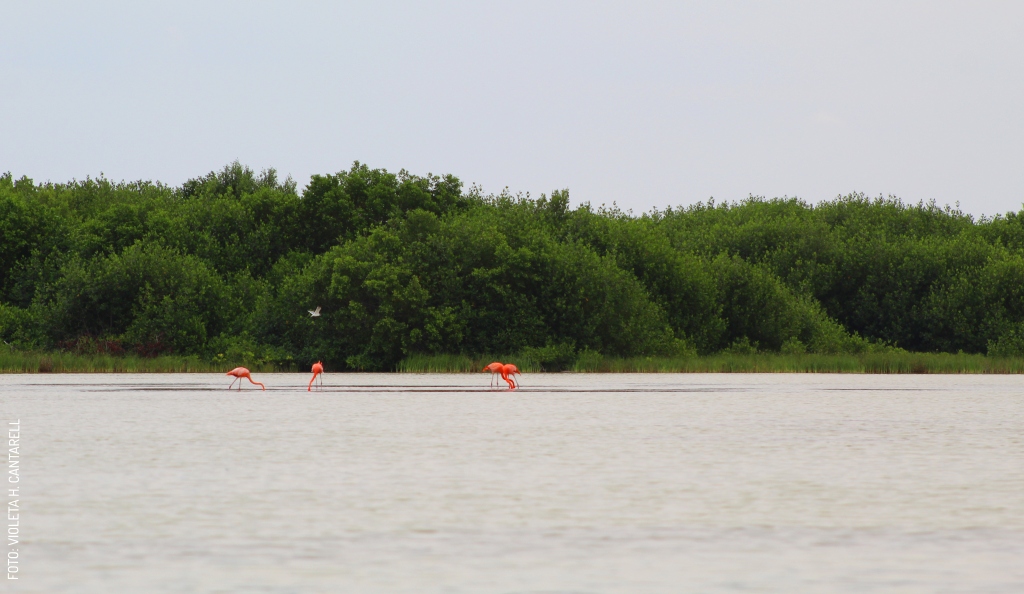- Home
- Destinations
- Haciendas
Haciendas
Haciendas in México were part of an economic system initiated by the Spanish in the 16th century, with certain similarities to the European feudal system. Initially, they were mainly agricultural and livestock production units. Over time, haciendas evolved into symbols of economic and cultural prosperity, showcasing architecture, furnishings, and art influenced by various parts of the world.
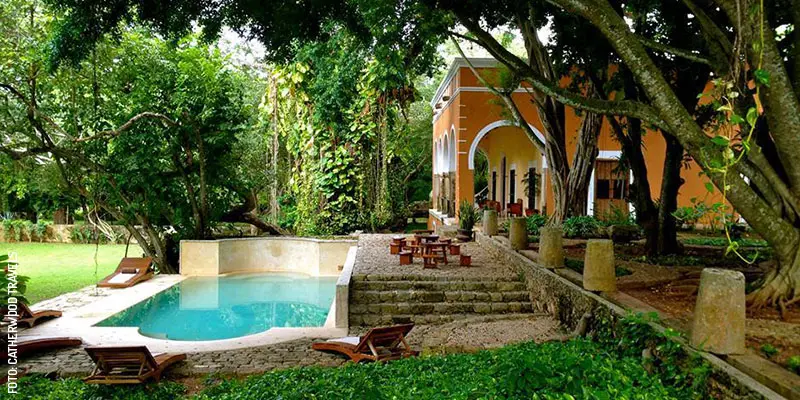
A Mexican hacienda can be compared to the southern U.S. plantations or European estancias. From the 16th century until well into the 20th century, haciendas were established in areas with exploitable resources. Thus, there were agricultural haciendas across México: livestock haciendas in the north, tequila-producing ones in Jalisco, mining estates in Hidalgo, sugar plantations in Morelos, and timber-focused ones in Estado de México.
In Yucatán, due to its relative distance from the rest of the country, haciendas initially produced a variety of goods. Over time, Yucatecan haciendas began to specialize: in the northern and western parts of the Península, henequén-producing haciendas predominated, while in the south and east, sugar haciendas were more common. One of the direct consequences of the Maya Social War (1847 - 1901), also known as the Caste War, was the collapse of the sugar industry in the southeastern part of the Península. This is why today, Yucatecan haciendas are primarily known as former centers of henequén production.
Haciendas and Henequén
Henequén is a variety of agave (the same plant used to make tequila and mezcal), which was ancestrally domesticated by the Maya to be rich in fiber rather than sugars. For much of the 19th and 20th centuries, henequén fiber was the essential raw material for making various textile and rope products; consequently, Yucatecan henequén was exported to strategic locations across the Americas and Europe, to such an extent that in many countries the fiber is known as sisal, after the Yucatecan port from which it was shipped.
Read more about henequén and its history in our article “The History of Henequén, Yucatán’s Green Gold.”
The hacienda owners
Approximately 50 Yucatecan families controlled the 1,462 haciendas that once existed in the Península. The demand for henequén was immense, and the business extremely profitable. Although it’s romantic to imagine that landowners lived on their estates, most of them resided in comfortably luxurious European-style mansions in Mérida, while trusted employees oversaw the operations of each hacienda.
Indigenous labor in the haciendas
A crucial difference between southern U.S. plantations and henequén-producing haciendas in southeastern México lies in the fact that, following the country’s independence, slavery was officially abolished. Therefore, hacienda workers were not, formally speaking, slaves. However, working conditions were often not substantially better here than there.
With the Mexican independence came an era of land privatization, driven by both the federal and state governments, even during Yucatán’s period of independence from México. The goal was to foster economic development in the new nations through the exploitation of lands that had long belonged to the Church or Indigenous communities. Across the country, haciendas expanded at the expense of communal and traditionally used lands.
During the Colonial period, Spanish law offered certain allowances to Indigenous populations to maintain communal landholdings. This was done to ensure tax revenue for the Crown while avoiding the concentration of power in too few hands. However weak these protections may have been, they disappeared with México’s proclamation of independence.
Moreover, high civil and ecclesiastical taxes forced the Indigenous population into inescapable debt. The landowners took advantage of this by offering to pay off these debts in exchange for labor. However, they simultaneously created new, insurmountable debts that, one way or another, kept the Maya workers bound to the haciendas. A clear example of this was that each landowner paid workers with their own currency, which was only accepted at their 'tiendas de raya' (company stores), where products were sold at exorbitant prices.
The henequén haciendas also employed immigrants brought in under false promises of prosperity, including Chinese and Korean laborers, who often found themselves in conditions akin to indentured servitude.
The components of a hacienda
Haciendas included vast henequén fields, cultivated by hundreds of men. The Main House was usually the most imposing building, housing the landowner’s quarters and serving as the administrative center.
Henequén processing took place in the Casa de Máquinas (Machine House). Typically, there was also a chapel, the foreman’s house (mayordomo), and numerous smaller buildings for storage. Additionally, haciendas often had their own school, infirmary, shop, church, cemetery, jail, and stables.
Decline of the henequén haciendas
As mentioned earlier, the Caste War devastated many of the Península’s sugar-producing haciendas. Although some were later converted to henequén production, many others were abandoned entirely.
The final blow, however, came with the invention of synthetic fibers. As demand for henequén fiber drastically dropped, the vast expanses of land devoted to its cultivation became unsustainable. Most haciendas were gradually abandoned, subdivided, or demolished, with many reclaimed by the Yucatecan jungle.
Between 1980 and 1990, haciendas began to be rescued from oblivion. Their architecture, typically dating from the 17th, 18th, and 19th centuries (some even Colonial), made them highly attractive places to visit. Once restored and rehabilitated, many were transformed into charming restaurants, hotels, or event venues.
What you’ll see when visiting a hacienda
Specific features vary from one hacienda to another, but they tend to share common characteristics. In addition to the main buildings mentioned earlier, you’ll find expansive gardens with centuries-old trees. Notable features include arcades (long hallways with arches), high ceilings, and thick masonry walls, often at least 30 cm (a foot) thick.
In the past, it was common to find rail tracks used to transport henequén bales, and sometimes even the trucks (flat wagons) that were pulled by mules.
Haciendas sourced water through wells or wind-powered pumps (locally known as “veletas”), iconic elements of their landscape. However, due to high maintenance needs, especially after storm season, and the arrival of electricity, they are now more decorative than functional in the few places where they still exist.
Most haciendas open to the public today feature swimming pools for guests. When original, these are usually water storage tanks; in many cases, though, the pools are more recent constructions.
The names of Yucatecan haciendas
Haciendas in Yucatán often have names that combine a Catholic saint’s name with the Maya name of the town where they were established. Examples include San Ildefonso Teya, Santo Domingo de Yunkú, or San José Cholul. Others are named using a Maya word paired with the surname of the owning family, such is the case with Tekik de Regil or Sotuta de Peón.
How to explore the haciendas of Yucatán
Each of the dozens of Yucatecan haciendas open to the public has unique characteristics. Some are visited as historical ruins; others operate as spas or luxury hotels. Several offer restaurant services, many are available to rent for events, and a few are still involved in henequén processing, keeping the tradition alive.
Hacienda Itzincab de Cámara
Located southeast of Mérida, this gorgeous hacienda was built atop an ancient Maya site and has a pyramid on its grounds. Here, you can get a day pass and enjoy a whole day in the Yucatecan countryside. Walk through its exuberant gardens, swim in its three swimming pools, discover the astonishing history of henequén in its Casa de Máquinas, and at the very end recharge yourself with positive vibes by climbing its pyramid! The pass also includes a three-course meal made with local products from their onsite Milpa. It’s best if you plan this day and make a reservation.
Location: maps.app.goo.gl
Events, experiences, and day trips.
Hacienda Tekik de Regil
 The exquisite hacienda Tekik de Regil is located just outside of the city of Mérida and is a monument to Yucatán’s belle epoque. You can also spend time here through a day pass and discover the unique architecture of this property which includes its Casa de Máquinas, a chapel inspired on the Temple of the Madeleine in Paris and the impressive main house with its beautiful murals. Besides a tour of the hacienda, the pass includes a three-course regional meal and access to the main swimming pool so that you can relax and enjoy a truly luxurious time.
The exquisite hacienda Tekik de Regil is located just outside of the city of Mérida and is a monument to Yucatán’s belle epoque. You can also spend time here through a day pass and discover the unique architecture of this property which includes its Casa de Máquinas, a chapel inspired on the Temple of the Madeleine in Paris and the impressive main house with its beautiful murals. Besides a tour of the hacienda, the pass includes a three-course regional meal and access to the main swimming pool so that you can relax and enjoy a truly luxurious time.
Location: maps.app.goo.gl
Events, experiences, and day trips.
Hacienda Chichén Resort
 Chichén Itzá is a fascinating world of magic and beauty, and Hacienda Chichén is the perfect sport to enjoy Maya culture in an intimate, serene setting surrounded by lush nature. Hacienda Chichén is a Yucatecan paradise that offers many unique experiences and activities such as: a private jungle, a museum, a Maya ceremonial site, gardens, and Yaxkín Spa: a magnificent Maya eco-spa. You’ll encounter rich history in every corner of this exquisite boutique hotel, renown for the attention to detail of its services and hospitality, and its fabulous location right in Chichén Itzá. Without a doubt, it’s the perfect place to rest before and after an adventure in one of the World’s New 7 Wonders.
Chichén Itzá is a fascinating world of magic and beauty, and Hacienda Chichén is the perfect sport to enjoy Maya culture in an intimate, serene setting surrounded by lush nature. Hacienda Chichén is a Yucatecan paradise that offers many unique experiences and activities such as: a private jungle, a museum, a Maya ceremonial site, gardens, and Yaxkín Spa: a magnificent Maya eco-spa. You’ll encounter rich history in every corner of this exquisite boutique hotel, renown for the attention to detail of its services and hospitality, and its fabulous location right in Chichén Itzá. Without a doubt, it’s the perfect place to rest before and after an adventure in one of the World’s New 7 Wonders.
Hacienda Misné
 Built in 1870, this hacienda has been restored to its former elegance, and the lush gardens have been surrounded with 50 spacious guest rooms and suites, each one opening directly onto the gardens. Spa, pool, bar, and event facilities are lovely and inviting. The hacienda is a perfect setting for the culinary experience provided by the restaurant La Pitahaya. La Pitahaya is a bright, airy dining room with lovely doorways, skylights, and stained glass windows. The hacienda is located only 15 minutes from downtown Merida, off the road from Cancun to Merida, just west of the Periférico.
Built in 1870, this hacienda has been restored to its former elegance, and the lush gardens have been surrounded with 50 spacious guest rooms and suites, each one opening directly onto the gardens. Spa, pool, bar, and event facilities are lovely and inviting. The hacienda is a perfect setting for the culinary experience provided by the restaurant La Pitahaya. La Pitahaya is a bright, airy dining room with lovely doorways, skylights, and stained glass windows. The hacienda is located only 15 minutes from downtown Merida, off the road from Cancun to Merida, just west of the Periférico.
Location: maps.app.goo.gl
Hacienda rentals for events and conventions.
Hacienda Mucuyché
 Since opening, this estate located an hour south of Mérida has become a must-visit place for everyone. The former hacienda has many partially-restored constructions that include Arab and French-style arches, but the real attraction here are the hacienda’s cenotes. Cenote Carlota, named for the Empress of México who visited the site in 1865, has a canal surrounded by endemic plant life, Cenote Azul features incredible natural lighting that reflects off its stalactites. You will have access to changing rooms, bathrooms, lockers so you can store your valuables, and a pleasant restaurant and swimming pool. For your visit, dress comfortably; be sure to pack your swimsuit and your sense for adventure!
Since opening, this estate located an hour south of Mérida has become a must-visit place for everyone. The former hacienda has many partially-restored constructions that include Arab and French-style arches, but the real attraction here are the hacienda’s cenotes. Cenote Carlota, named for the Empress of México who visited the site in 1865, has a canal surrounded by endemic plant life, Cenote Azul features incredible natural lighting that reflects off its stalactites. You will have access to changing rooms, bathrooms, lockers so you can store your valuables, and a pleasant restaurant and swimming pool. For your visit, dress comfortably; be sure to pack your swimsuit and your sense for adventure!
www.cenoteshaciendamucuyche.com
Ubicación: maps.app.goo.gl
Tours and restaurant
Hacienda Petac
 It was bought in 2000 by an American couple. With the help of renowned architect Salvador Reyes, they lovingly restored Hacienda Petac and now offer it in rent as a home. With five buildings housing huge bedrooms and elegant bathrooms, an enormous game-filled game room, a library, bar, chapel, pool, fountains and lush gardens, spa and exercise facilities, as well as a media room and a stunning teaching kitchen, this is the perfect place to have an up-scale family vacation with all the trimmings. Seven beautiful suites.
It was bought in 2000 by an American couple. With the help of renowned architect Salvador Reyes, they lovingly restored Hacienda Petac and now offer it in rent as a home. With five buildings housing huge bedrooms and elegant bathrooms, an enormous game-filled game room, a library, bar, chapel, pool, fountains and lush gardens, spa and exercise facilities, as well as a media room and a stunning teaching kitchen, this is the perfect place to have an up-scale family vacation with all the trimmings. Seven beautiful suites.
Location: maps.app.goo.gl
Private rental of the entire hacienda.
Hacienda Sac Chich
 Sac Chich is the perfect hideaway haven for one couple, a group of friends or a family reunion. There is privacy and space for all. As you would expect from a villa of this caliber, every detail of the interior and exterior finish is flawless. Hacienda Sac Chich is not a hotel experience yet goes beyond a home rental. This historic hacienda captures the true spirit of Yucatán culture and reflects a sense of peace and harmony.
Sac Chich is the perfect hideaway haven for one couple, a group of friends or a family reunion. There is privacy and space for all. As you would expect from a villa of this caliber, every detail of the interior and exterior finish is flawless. Hacienda Sac Chich is not a hotel experience yet goes beyond a home rental. This historic hacienda captures the true spirit of Yucatán culture and reflects a sense of peace and harmony.
Location: maps.app.goo.gl
Lodging and events.
Hacienda Sacnicte
 Hotel Hacienda Sacnicte (white flower) in Izamal, near Merida, is a truly unique, contemporary, luxurious, hip and secluded resort with the traditional architecture of the hacienda in Merida. To strike the balance between the 17th century and today, Philippe y Nadia have created an unforgettably serene atmosphere, to offer you a new reality of sophisticated vacations to spend with your family and friends.
Hotel Hacienda Sacnicte (white flower) in Izamal, near Merida, is a truly unique, contemporary, luxurious, hip and secluded resort with the traditional architecture of the hacienda in Merida. To strike the balance between the 17th century and today, Philippe y Nadia have created an unforgettably serene atmosphere, to offer you a new reality of sophisticated vacations to spend with your family and friends.
Location: maps.app.goo.gl
Lodging
Hacienda San Francisco Tzacalha
PAK AL IN UOL (a garden in the heart). The Hacienda San Francisco was founded in 1857 by the purchase made by Albino Manzanilla Cámara of an old orchard, which according to local tradition belonged to the Franciscan convent of Santa Clara, Dzidzantún. Continuous ongoing purchases saw the hacienda grow to 9600 hs. It has 30 beautiful rooms, Maya-style Ripios, and a Junior suite, Suite, and 2 majestic Master Suites. There is delicious international cuisine in a setting of peace and complete harmony with nature in the Restuarant La Bodega. There is also a pool, game room, wireless Internet, large ponds, air conditioning, horses, beautiful gardens and birds and other wildlife at the hacienda’s reserve.
Hacienda San Jose Pachul
A former henequen-producing hacienda, is now restored to the comfort of a private villa B&B with two great luxury suites for your enjoyment and relaxation, with a beautiful swimming pool and delicious gourmet food. If you are not an overnight guest, come and spend the afternoon in a great setting for lunch, just reserve a day in advance and the owners will be more than happy to accommodate you.
Hacienda San Pedro Ochil - Jardin Ochil
Famous hacienda that was open to the public and since 2020 closed its doors for rental only.
Hacienda Santa Cruz
This hacienda was completely restored and is just twenty minutes from downtown Mérida, in a lovely, peaceful setting. The hacienda is spacious and laid-back. The food is hearty and delicious. The pool is filled with chemical-free water from the cenote below, and guests are welcome to enjoy it all. The hacienda’s accommodation includes master and junior suites, double rooms, and a casita, and children are especially welcome. The hacienda also has a spa on site.
Hacienda Sotuta de Peón Live Hacienda / Village Resort
If you take Exit 4 off the Periférico de Mérida it will take you only 45 minutes to reach this live hacienda that was built towards the end of the 19th century in Tecoh. Today, it is one of the few working haciendas that still produces henequén. Taking a tour of this magical place is a popular experience and it will show you the main house that still has its original tiles imported from Europe in the 1800s. Then you will get to know more about the henequén process in the Casa de Máquinas, take a ride in one of the trucks, and visit the Maya house where you will hear about local stories and traditions. Then you will reach cenote Dzul-há before enjoying a traditional meal at the hacienda’s restaurant. The hacienda also provides other services, such as a horseback riding tour that takes you to their organic orchard and around the grounds.
Hacienda Teya
Dating back to 1683, Hacienda Teya is now a restaurant-hotel-social events setting. Owned and run by the Cardenas Sosa family, they have slowly but surely developed a name for having the best Yucatecan food in the area. Lunch is served from noon to 6 pm. The social events areas of the hacienda include a chapel, an elegant staircase (great for photographs), lush gardens, and stained glass windows that make Hacienda Teya a very popular place that is the perfect setting for a wedding.
Hacienda Ticum
Hacienda Ticum, or Xcum, is the “place of the Maya god of the air.” It was built in 1891. it was a small hacienda processing henequén, making ropes for ships from the henequén plant. Everything was done by human hands and through giant stone molds and mortars. The hacienda was abandoned in the 1940s at the time of the agrarian reform of President Cardenas, and the land was given back to the farmers. Subsequently, Xcum became a ranch for several years and gradually its buildings collapsed into ruins and finally fell abandoned. Only women from the village of Ekmul chapel were returning to celebrate the Holy Cross. But since 2010, the Hacienda Santa Cruz Ticum regained its splendor in the history of the Maya world and is today again a jewel in the history of Yucatán where henequen is engraved in the heart of the Yucatecan people.
Hacienda Xcanatun
Hacienda Xcanatún is a reference for locals and visitors alike thanks to its prime location near the city of Mérida and its unparalleled customer service. In 2020, after a stunning renovation, Angsana took over the management of this property. The legendary gardens, luxurious suites, magnificent restaurant Casa de Piedra, and sumptuous spa continue defining this luxury hacienda. You can visit even without making a reservation and try the culinary masterpieces at Casa de Piedra, have a spa treatment, or if you’re really in the mood to pamper yourself, go ahead and do both!
https://www.angsana.com/es/mexico/hacienda-xcanatun
Hacienda Yaxcopoil
This is a hacienda where time stands still. You’ll roam freely through the rooms in the main house. There you will see the large lounges and drawing rooms with high ceilings, walls with painted stencils, original mosaic floor tiles, and European furniture in every room. There is an impressive Casa de Máquinas here also, with examples of the machinery used to process henequén. It was built in the 1600’s and has been in the Faller Cervera family since 1864. Present day owner, Miguel Faller, is 5th generation. He has opened the hacienda, which is on the way to Uxmal, as a museum, making it a popular stop for tourists. The entire setting is frozen in time, and you will feel as though you have stepped into a time machine while wandering the grounds of this beautiful hacienda. There is also a casita, with a kitchen, that is available to the public for overnight stays, where you can opt for the delicious breakfast and dinner served in the casita. This is a wonderful place at an accessible price where you will surely get the feel of hacienda living.
IHG Hotels & Resort
In the early 1990’s we find visionary Mexican banker Roberto Hernandez coming to the Yucatán and buying some of the derelict haciendas and turning them into Grand Tourism hotels after carefully, lovingly and faithfully restoring them (under the talented hand of Arq. Salvador Reyes Ríos) to their previous splendor – and splendid they were and splendid they are now. With no more than 28 rooms, the haciendas are Yucatán’s most luxurious lodgings. Personalized attention, a refined setting, lush gardens, tropical plants, antique furnishings and friendly staffs await you. You will feel totally pampered. Today, these restored haciendas make up IHG Hotels & Resort – Haciendas Temozón, Santa Rosa, and San José, in Yucatán, and Uayamón and Puerta Campeche in Campeche. These hotel haciendas, Grand Tourism establishments that “don’t mean to spoil you, but they will”, are the ultimate getaway in total luxury.
Hacienda Temozon Sur
When you get out of your car, you’ll smell the sweet air and hear the birds of Temozón, the most palatial of the restored haciendas. The entrance leads up stairways, past the unique dolphin-head waterspouts, to the grand terrace. This hacienda, renovated by Mérida resident architect Salvador Reyes-Ríos for Roberto Hernández of Banamex, was chosen for a summit meeting between President Bill Clinton and Presidente Ernesto Zedillo of México in 1999, and again for President George W. Bush and Presidente Felipe Calderón in 2007. If you’re hungry, you can enjoy a delicious gourmet meal for a reasonable price. The service is impeccable, the food outstanding, and the occasional peacock adds to the peaceful and exotic setting. If you plan to spend the night here, be prepared for a luxurious experience at a luxurious price. But you don’t have to spend the night to enjoy Temozón.
Artículos relacionados

Conociendo Yucatán: Una escapada de dos días por el Sur de Yucatán
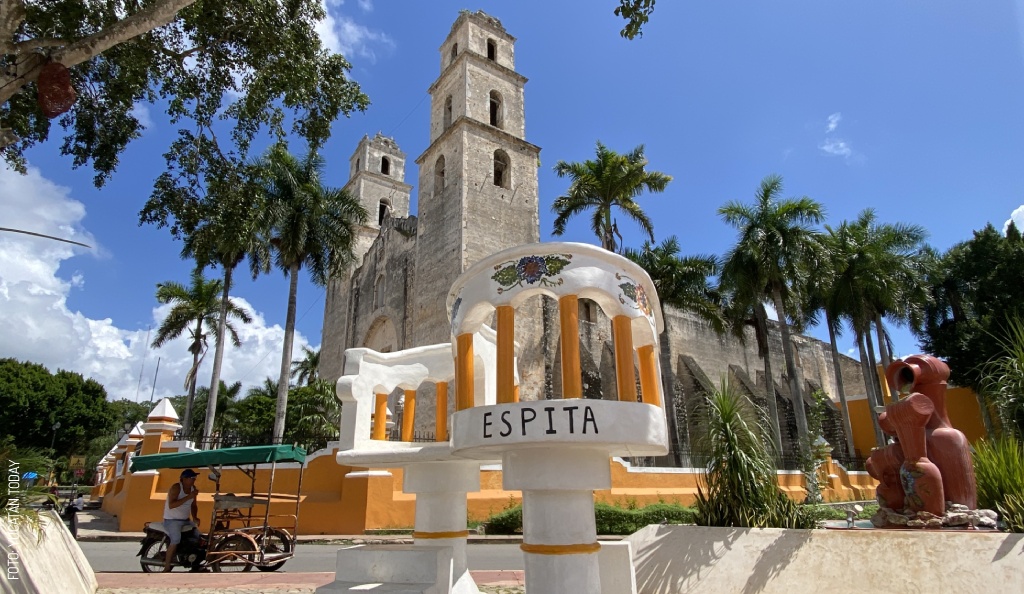
12 propósitos de Año Nuevo al estilo yucateco
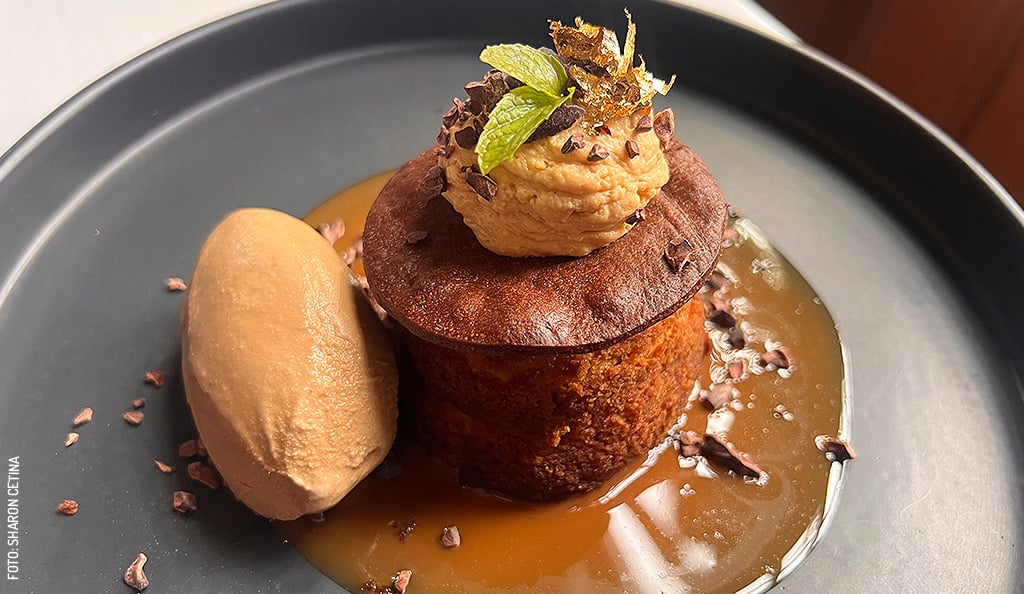
Deja lugar para el postre: 4 restaurantes sobresalientes en Mérida
Artículos relacionados
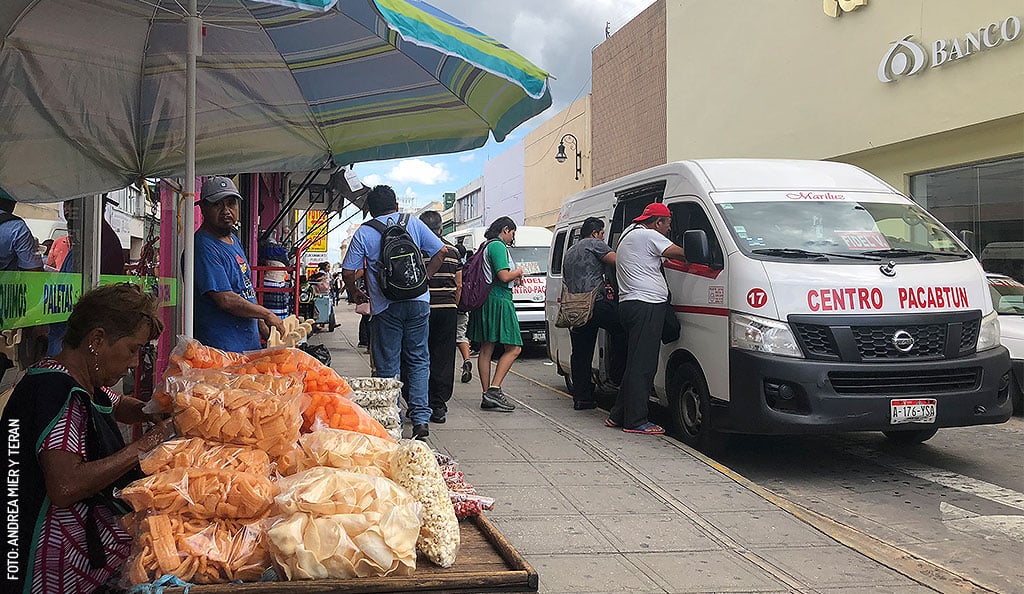
Riding a Colectivo in Mérida: A Local Adventure Worth Taking
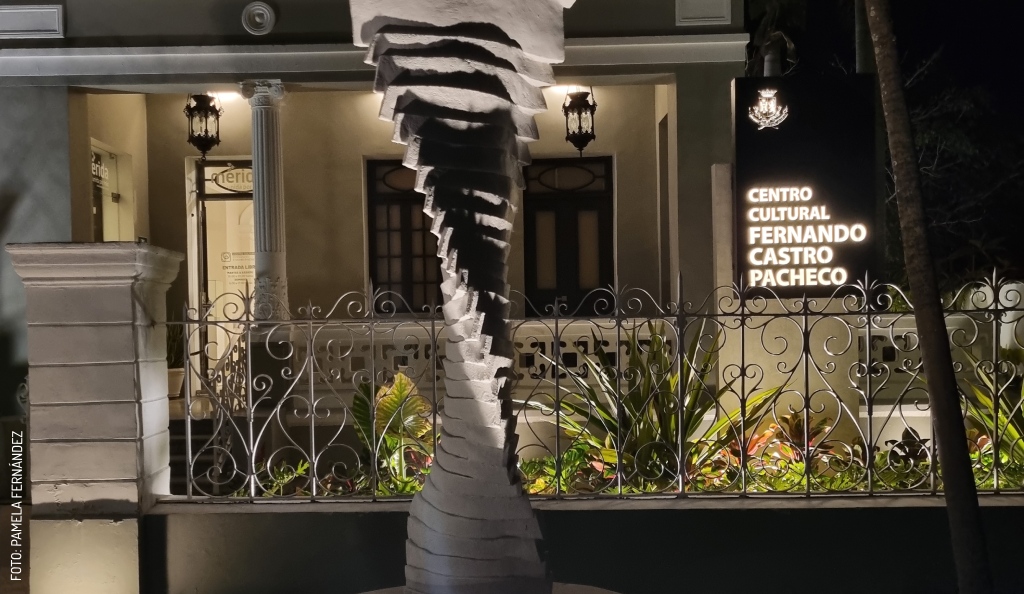
A Seven Day Stay: Telchaquillo, Teabo, Valladolid, Cenotillo
